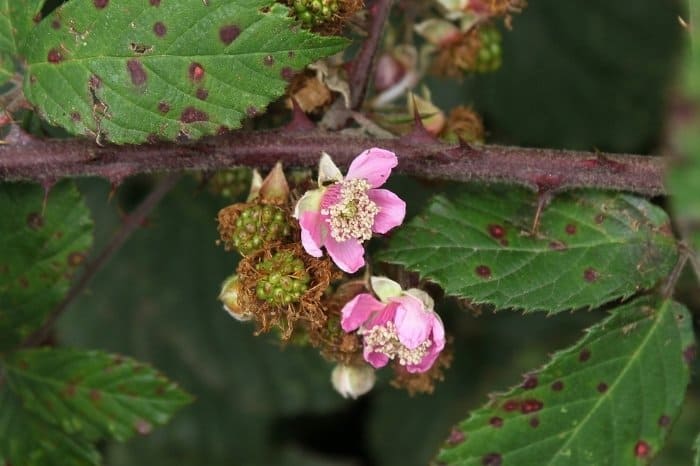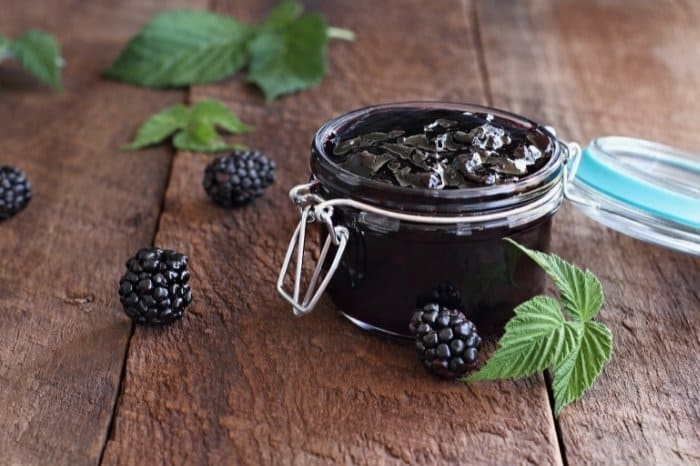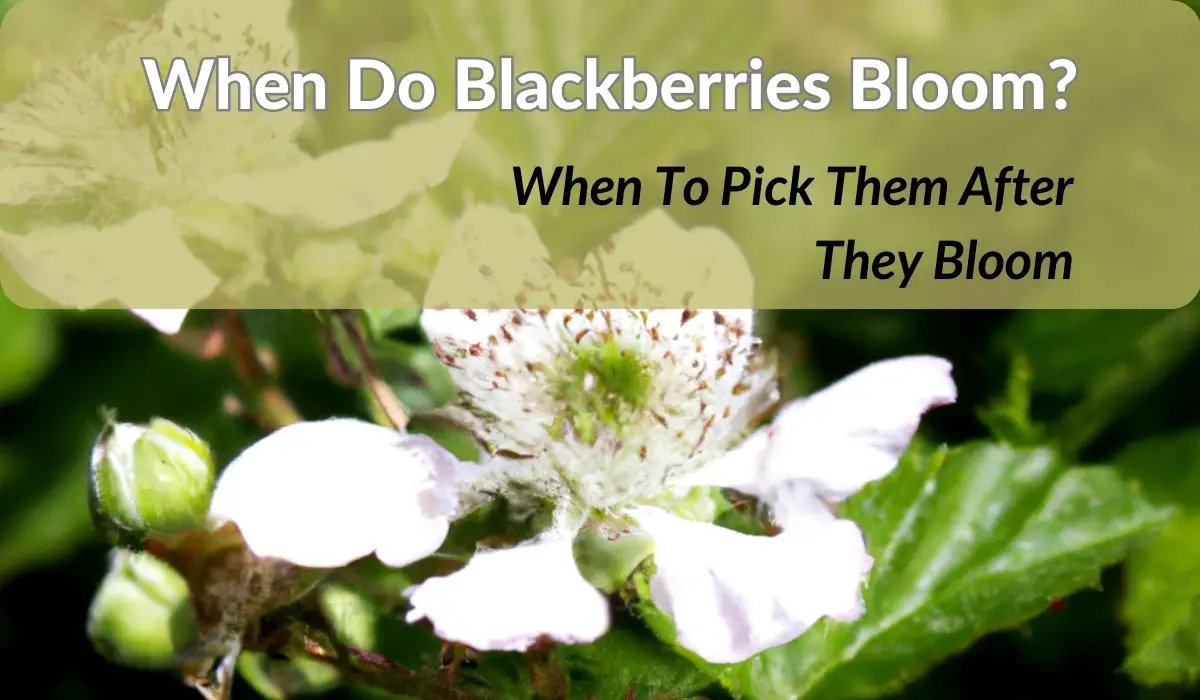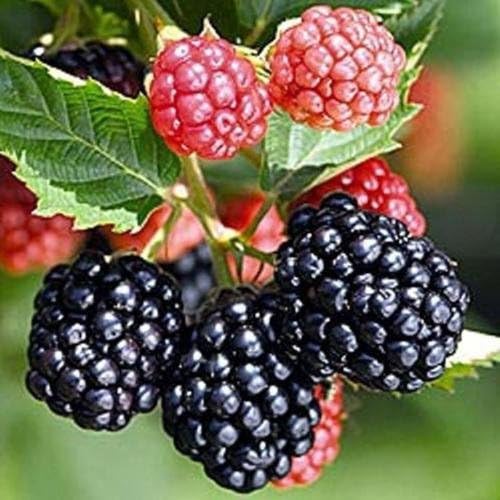Last Updated on June 20, 2023 by Tony Manhart
Blackberries are excellent plants to have around your home, feed you and make your garden beautiful; when do blackberries bloom?
The blackberry is a summer berry that most people love to grow around their homes.
Blackberries have a rich, exquisite flavor that is good on its own or baked into a pie. Picking blackberries is a fun summer activity to enjoy with kids, family, and friends. In addition, not to forget the many recipes you can make from these berries.
Blackberry bushes are popularly known to produce juicy, sweet, finger-staining fruit delicately in many homes. Once they have been picked, they don’t ripen anymore, so you have to pick them when they dead ripen.
Before your blackberries produce their juicy crop, their flowers must bloom. Blackberries bloom and fruit sooner than fruit trees are planted at the same time. Blackberries took only a year to mature and produce fruits. To understand the blackberry-blooming process, read on!
When Do Blackberries Bloom?
In warm areas of USDA zone 7 and south, these berries start blooming from mid-April to early May. In cooler climates north of zone 7, blackberries begin to bloom in late May.
The right time for blackberries to bloom depends on the weather of the region where they are growing.
If you want earlier harvests, go for early-blooming varieties like the Choctaw (Rubus fruticosus), which grows in USDA zones 8 to 9, and is vigorous but thorny.

During the bloom season, blackberries attract butterflies and bees to the sweet nectar within the flowers.
You can grow blackberry bushes in USDA plant hardiness zones 5 to 10. They also grow wild along rural roads and in the woods.
When Do Blackberries Produce Fruits?
Blackberries start to ripen about 60 to 70 days after the blooms first appear, but it depends on the variety. Some varieties, like the Arapaho thornless blackberry (Rubus fruticosus) that prefer USDA zones 5 to 10, produce ripe fruit about 11 days before the Navaho(Rubus fruticosus, which does well in USDA zones 6 to 10. Navaho is the world’s first erect-growing thorn-less blackberry.
Blackberries are advantageous because they are self-fertile; they do not require a nearby male plant for pollination. It is possible to grow several blackberry plants within the same area.
Growing several plants together provides more pollen for bees to enjoy and more blooms to pollinate. More blooms in one place mean better pollination for each plant. If you don’t have a large garden to grow many blackberries, a single plant will produce blooms by itself.
Triple Crown Thorn Less Blacberry Qty 3
If you grow different blackberries, you will notice they can cross-pollinate each other as long as they all bloom simultaneously. Different varieties can be grown in the same area and still get the benefit of cross-pollination.
When To Pick Blackberries After They Bloom
Harvesting blackberries largely depends on what kind of climate they are growing under. Blackberries are heat and frost tolerant; as a result, they can be grown virtually all over America.
Their ripening time varies based on the USDA hardiness location they are growing. In the southern United States, the blackberry harvesting time is in spring or early summer. In the Pacific Northwest, you harvest your berries late in the summer through the first frost of autumn. Throughout the rest of the United States, the prime blackberry season is July through August.
Some blackberry varieties are ever-bearing, and they produce a crop on the new growth of their old canes in the summer. They also produce another crop in the fall from the same new canes.
Blackberry harvesting must be done by hand. Pick your berries only when they are fully ripe – the color must have changed from red to black. Harvested blackberries do not continue ripening after they are harvested.
Once picked, the fruit will only last about a day after it is picked, so either eat it fresh or refrigerate it as soon as possible. Do not pick wet blackberries, as this will encourage them to squish or mold.
The harvesting season for blackberries lasts about 3 weeks, during which they should be harvested at least 2 or 3 times each week. Depending on the variety you planted, a single plant can produce between 2 to 25kg of fruit.
Post-Harvest Plant Care
After you have harvested your fruits, you will need to take care of your plant by pruning off the canes that produced the fruit. This is because they will not bear fruit again.
You can remove the floricanes for both the erect and trailing blackberry types. Once done with pruning, you are finished with your post-harvest care for your blackberry plants.
For trailing blackberry plants, you will have to remove all the strongest 6 to 12 canes that produce fruit the following season. Support the remaining canes with a trellis to be properly supported for the next growing season.
If you want to know when is the best time to plant blackberries, watch the next video
Favorite Blackberry Recipes To try
Mini Blackberry Pies – Dessert ideas are here for your mid-summer parties. Mini blackberry pies might remind you of the nostalgic moments you shared with your grandma or mom. They are delicious and a party favourite.
Blackberry Jam – This is a classic for every home that ever grew berries. Blackberry jam and peanut butter sandwiches will never be the same again. You will not have to buy this jam, but you get to enjoy it as much as you can all winter.

Blackberry Sorbet – The hot summer will never be the same again when you have your blackberry sorbet. It is easy to make and best served chilled.
Blackberry Syrup – This can be a tasty substitute for maple syrup! Try the syrup on your pancakes or your favourite breakfast foods, and it will warm your heart.
Conclusion
Now you know all about these yummy berries that stain your fingers as you harvest them.
If you happen to disturb the ground around a blackberry plant by tilling or pulling old canes out, you might encourage new growth from the suckers. The new suckers grow up naturally around the base of an existing plant. They take root and thrive right where they are. You can dig them up and plant them elsewhere to thrive here.
If you do this in early spring, the roots will keep growing throughout the year and begin producing canes the following spring.
FAQ’s
FAQs
What time of year do blackberries bloom?
According to the USDA, Blackberries are in full bloom from May to June. Blackberries are usually in full bloom from May to June.
Do blackberries fruit twice a year?
Blackberries are a cool weather berry, and they're best in the spring and fall when the days are short and cool. They do not tolerate hot weather or long periods of drought.
What time of year do blackberries produce fruit?
Blackberries are in season from July through September, depending on where you live. In the North East and Midwest they are at their prime during the late summer months, when the weather is still warm. In California and Arizona, they are available year-round, but in the Northeast, they are usually picked before Thanksgiving and shipped to grocery stores by Christmas.
They are usually ready to harvest between July and September, but the peak season is August and September. The harvest season usually lasts for two to three weeks.
How long is blackberry season?
According to the National Agricultural Statistics Service, blackberry season in the United States lasts from May to October. The season peaks in September and October, according to the NASS. However, if the weather is hot, then the season may be extended.
Blackberries are a popular fruit in the United States. According to the USDA, the country produces about 6 million tons of blackberries each year. Blackberries are native to North America and were first cultivated in France. The berries are rich in vitamin C, fiber, and potassium. They are also considered to have antioxidant properties. They are often grown as an ornamental plant. The leaves are dark green and grow about 2 feet tall. Blackberries have a bright red fruit with five to eight seeds inside.
How do you that the blackberries are ready to harvest?
Blackberries have the best flavor when they are fully ripe. The fruit is usually ready to harvest when it turns a deep purple color. But the berries will stay on the plant for up to 5 weeks after that.
Do blackberries like heat?
Blackberries are a cool-weather plant, but they can take the heat.
How long does it take for blackberries to grow?
Blackberries are perennial plants that live for about five years. In fact, blackberries are a very fast-growing perennial vine, which is why they are so popular in the nursery industry. If you plant them during the winter, they will be ready to harvest in about four to six months.
Blackberry plants can grow up to 10 feet tall and bear many fruit clusters. Some varieties can grow as high as 15 feet, making them an excellent choice for privacy screens. They do need plenty of room to grow, but they are easy to train.
Should you fertilize blackberries?
Fertilizing is a very important part of any gardening project. Whether it’s for a vegetable garden, flower garden, or fruit tree, you will want to make sure that you are providing them with the nutrients they need to grow. For a blackberry bush, you will want to apply fertilizer at least once during the summer growing season.
Caroline is a gardener who loves to get down to the nitty–gritty of gardening. She proudly proclaims herself as a ‘dirt worshipper‘ and can often be found deep in the garden, covered in soil and singing to her plants. As a self–proclaimed ‘plant whisperer‘, Caroline believes that plants need love and attention just like any other living thing, and she loves to give them both. When she‘s not tending to her garden, you can often find her researching the latest gardening trends, or teaching others how to make their gardens thrive



